
Gracillariidae is an important family of insects in the order Lepidoptera and the principal family of leaf miners that includes several economic, horticultural or recently invasive pest species such as the horse-chestnut leaf miner, Cameraria ohridella.

Caloptilia azaleella is a moth of the family Gracillariidae. It is endemic to Japan, but has been introduced worldwide, wherever there are Azaleas.

Caloptilia rufipennella is a moth of the family Gracillariidae that is found throughout Europe.
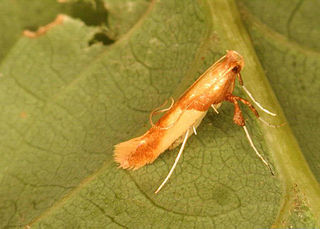
Caloptilia alchimiella is a moth of the family Gracillariidae. It is found in Europe and the Near East.

Caloptilia cuculipennella is a moth of the family Gracillariidae. It is found in Holarctic Region, including most of Europe.

Caloptilia populetorum is a moth of the family Gracillariidae. It is found in most of Europe, except Italy, the Balkan Peninsula and the Mediterranean islands.
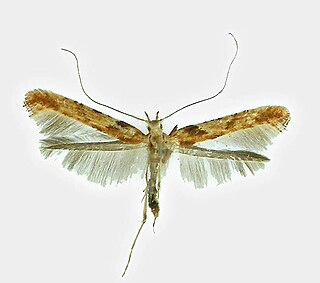
Caloptilia hemidactylella is a moth of the family Gracillariidae. It is mostly found in central and northern Europe, although there are recent records from Belgium and the Netherlands. It is a rare species in Great Britain with no reliable records since the 1950s, when it was recorded in Gloucestershire. It is also believed to have been present in Northamptonshire in the 19th century.

Caloptilia is a genus of moths in the family Gracillariidae.

Caloptilia betulicola, the red birch slender, is a moth of the family Gracillariidae. It is found from Scandinavia and the north of European Russia to the Pyrenees and Alps and from Ireland to Poland and Slovakia. In the east it is found up to China, Japan and the Russian Far East.
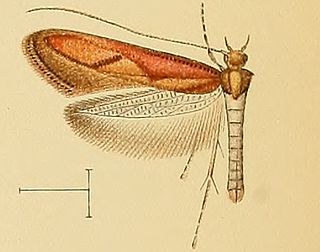
Caloptilia aurantiaca is a moth of the family Gracillariidae. It is known from Madeira and the Canary Islands.

Caloptilia coruscans is a moth of the family Gracillariidae. It is known from south-western Europe and Thrace.
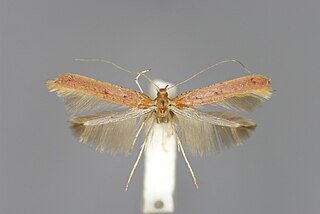
Caloptilia elongella is a moth of the family Gracillariidae. It is known from all of Europe east to eastern Russia. It is also found in North America from British Columbia, south to California and east in the north to New Hampshire and New York.

Caloptilia falconipennella is a moth of the family Gracillariidae. It is known throughout all of Europe, except the Balkan Peninsula.
Caloptilia flava is a moth of the family Gracillariidae. It is known from southern Russia and Rhodes.

Caloptilia semifascia is a moth of the family Gracillariidae. It is known from most of Europe, except the Iberian Peninsula, Ireland, Iceland and the western part of the Balkan Peninsula.
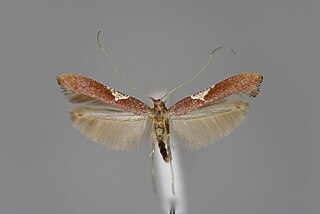
Caloptilia stigmatella is a moth of the family Gracillariidae. It is known from the Holarctic Region, including all of Europe.
Calybites hauderi is a moth of the family Gracillariidae. It is known from Romania and the Pyrenees, but is very rare and local. The records of this species in Great Britain and Belgium were due to the confusion with another species, Caloptilia onustella.
Caloptilia magnifica is a moth of the family Gracillariidae. It is known from the southern Alps and former Yugoslavia, and a subspecies of Japan.

Caloptilia leucapennella is a moth of the family Gracillariidae. It is known from all of Europe, except the Balkan Peninsula.
Caloptilia diversilobiella is a moth of the family Gracillariidae. It is found in the United States (California).














